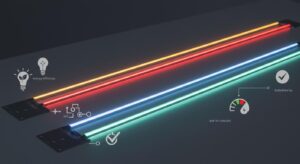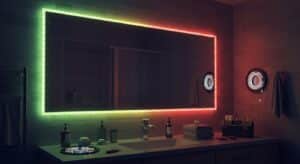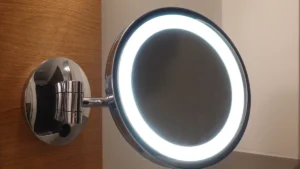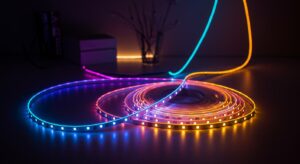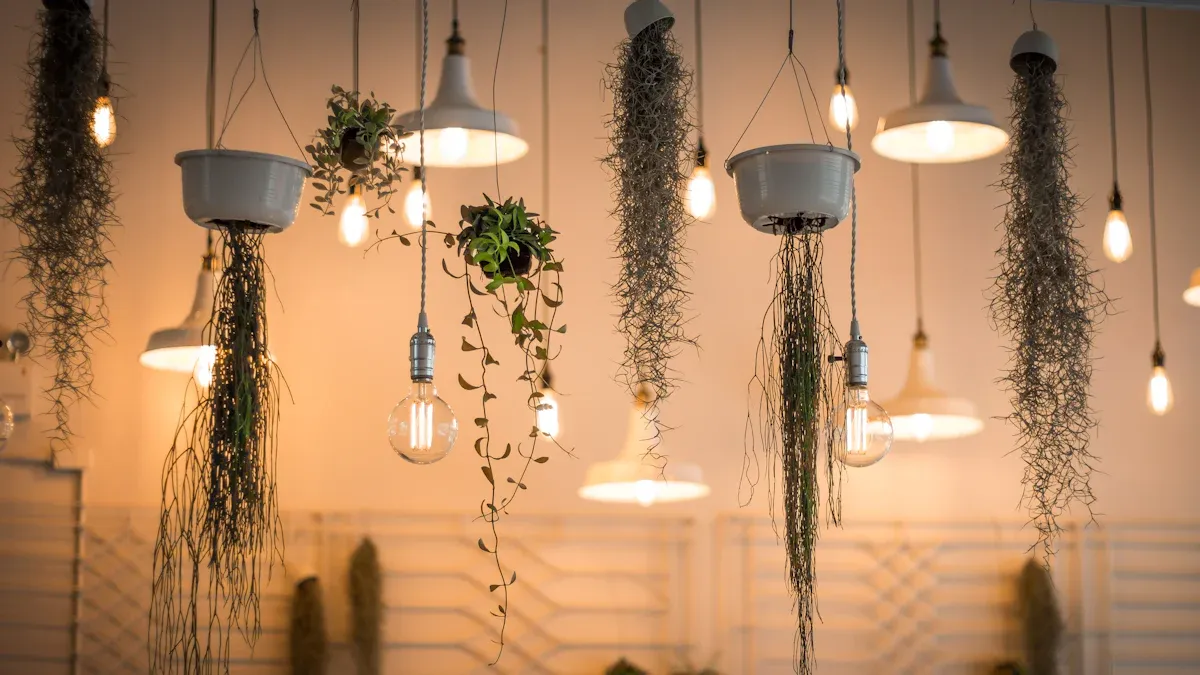
Imagine walking into a room that feels warm and welcoming. Furniture light strips can help you do this by transforming your space into a beautiful sight. These flexible lights enhance the look of any furniture, like a modern coffee table or a comfy bookshelf. You can easily add light strips to furniture to create cool designs that showcase your style. Why not let your creativity flow and consider how these lights could improve your home?
Key Takeaways
LED strip lights can change your furniture. They make your home feel warm and welcoming.
Pick the right LED strips by thinking about brightness, color, flexibility, waterproof rating, and how long they last.
Installing LED strips is simple with good planning and tools. Follow a step-by-step guide for the best results.
Placing LED strips in creative ways, like under shelves or around furniture edges, makes things look better and feel nice.
Cleaning and fixing problems regularly can help your LED strip lights last longer. This keeps them bright and working well.
Understanding LED Strip Lights
When you want to improve your furniture with LED strip lights, knowing the types can help a lot. Here are some popular choices you might think about:
Kitchen lighting: LED kitchen cabinet lights shine bright for cooking and food prep. They light up your workspace and make cooking more fun.
Wardrobe lighting: These lights turn on when you open the doors. This makes it easier to pick your outfits. No more searching in the dark!
Display unit lighting: Soft lights from LED strips can show off items on shelves. This makes them easier to see and makes your decor stand out.
Now that you know the types, let’s look at the key features to think about when picking LED strip lights for your furniture. Here are some important things to remember:
Brightness: Measured in lumens, more lumens mean brighter light. For mood or accent lighting, look for strips with 510-1150 lm/m. If you need task lighting, aim for 910-1430 lm/m.
Color Rendering Index (CRI): A high CRI (80 or above) is important for true color. This makes sure the colors of your furniture and decor look real.
Flexibility: Good LED strips can bend and shape around your furniture. This lets you create cool designs. This flexibility helps you get the perfect look.
Waterproof Rating: If you want to put lights in wet areas, a waterproof rating is very important. This feature keeps them safe and lasting.
Longevity: LED strips can last for tens of thousands of hours. This makes them a smart choice. You won’t need to worry about changing them often.
By knowing these types and features, you can pick the right LED strip lights. They will not only make your furniture look better but also create a warm and inviting feel in your space.
Benefits of LED Strips
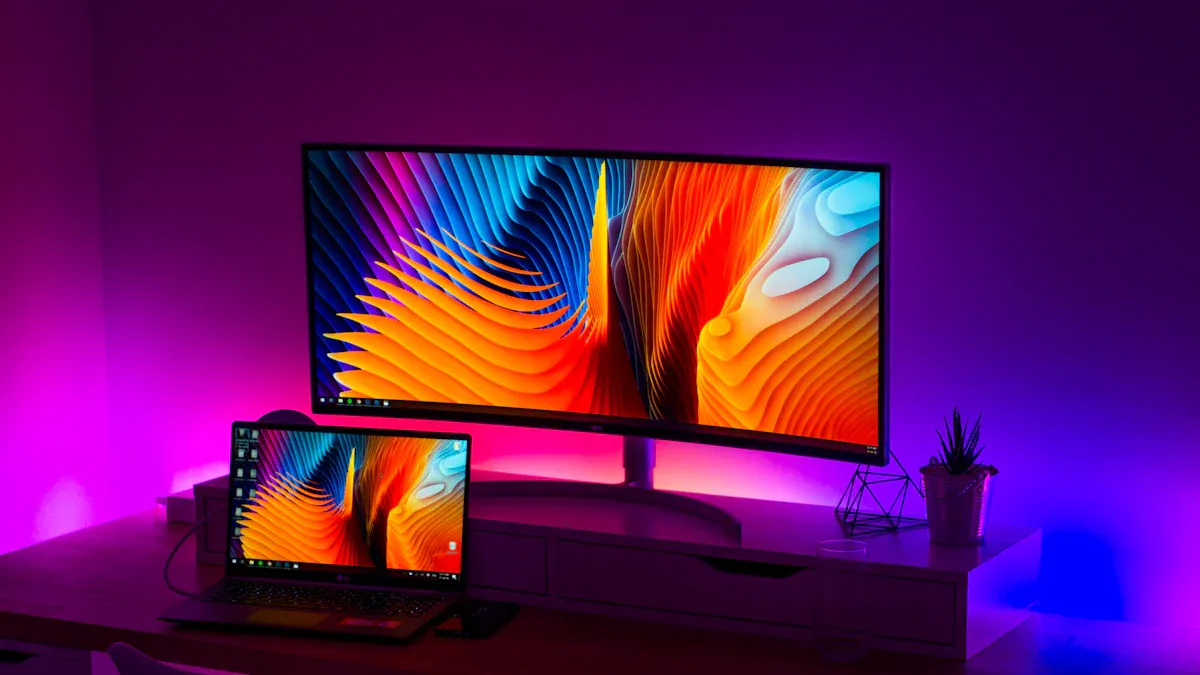
LED strip lights have many benefits. They can improve your furniture and living space. Let’s see how these lights make your home look better and feel nice.
Enhancing Aesthetics
When you add LED strip lights to your furniture, your space looks better right away. Here are some important features that help with this:
Feature | Benefit |
|---|---|
Versatility | LED strips can be used in many creative ways to change spaces. |
Customization Options | You can change colors and dim the lights for different feelings. |
Mood Creation | A soft glow makes cozy nights, while bright colors make parties fun. |
Many people say that after they put in LED strips, their homes look much nicer. Some common benefits are:
Better atmosphere in living areas
Ability to highlight special features in the house
Creation of layers that add depth and style
Options to change color temperature for different moods
Fun experiences with color changes and music syncing
These features make LED strip lights a great choice for improving how your home looks.
Creating Ambiance
Making the right mood in your home is important. LED strip lights are great at this. With their RGB colors and preset modes, you can easily change the lighting to fit your mood. For example, warm colors are good for relaxing, while bright colors are great for movie nights. Here are some ways LED strips help create ambiance:
You can change colors and brightness to set the mood for any event.
Smart home systems let you control lights with your voice and schedule, making life easier.
They use less energy, so you can enjoy nice lighting without high electric bills.
LED strip lights not only make your furniture look better but also create a warm and inviting feel in your home.
Besides looking good and creating a nice atmosphere, LED strip lights save energy. They use up to 85% less electricity than regular bulbs and last about 50,000 hours. This means fewer replacements and less waste, making them a smart choice for your home.
By choosing LED strip lights, you improve your furniture’s look and make a smart, eco-friendly choice that helps your wallet and the planet.
Installing Furniture Light Strips
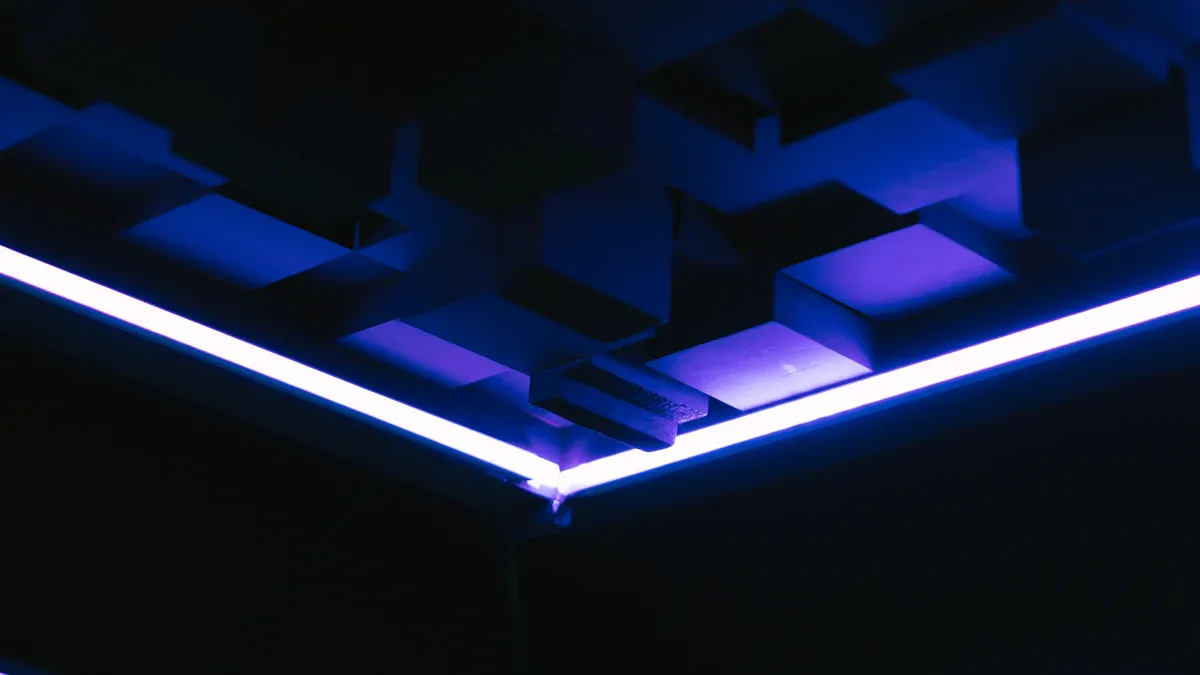
Installing LED strip lights in your furniture can seem daunting, but with the right tools and a clear plan, you can achieve stunning results. Let’s break down what you need and how to do it step by step.
Tools and Materials Needed
Before you start, gather the following tools and materials to ensure a smooth installation:
LED strip lights: Make sure you have the correct length and type for your project.
Power supply: Choose one that matches the voltage and wattage requirements of your LED strips.
Controller (optional): This is useful if you want color-changing or remote control features.
Double-sided adhesive tape or mounting clips: These will help secure the strips in place.
Mounting channel: Recommended for a clean look and added protection.
Installation tools: You’ll need scissors, wire strippers, a screwdriver, and a tape measure for accurate layout.
Tip: Always check the power needs and strip length before starting. This helps avoid using strips that are too long or underpowered by the wrong adapter.
Step-by-Step Installation Guide
Now that you have your tools ready, follow this step-by-step installation guide to get your LED lighting just right:
Plan Your Layout: Decide where you want to place the LED strips. Think about how the lighting will enhance your furniture and overall space.
Measure and Mark: Use a tape measure to determine the exact length of the area where you’ll install the strips. Mark the spots where you’ll place them.
Prepare the LED Strip: If your LED strip needs cutting, use scissors to cut it at the designated cut lines. This ensures you don’t damage the strip.
Clean and Dry the Installation Surface: Make sure the area is free from dirt and dust. A clean surface helps the adhesive stick better.
Start Hanging: Peel off the backing from the adhesive tape and carefully stick the LED strip to the marked area. If you’re using mounting clips, secure them in place.
Continue Securing: Press down firmly along the length of the strip to ensure it adheres well. If you’re using a mounting channel, place the strip inside it before securing it to the furniture.
Finish Up: Once everything is in place, connect the LED strip to the power supply. Make sure all connections are secure.
Test the Lights: Turn on your LED strips to check if they work properly. Adjust any sections if needed.
Common Mistakes to Avoid:
Inadequate Planning: Rushing can lead to uneven lighting. Take your time to measure and plan.
Incorrect Power Supply: Always match the voltage and wattage to your LED strips to avoid flickering.
Poor Surface Preparation: Clean the surface thoroughly to ensure the adhesive sticks well.
By following these steps, you’ll have your LED strip lights installed in no time, enhancing the beauty of your furniture and creating a warm ambiance in your space.
Creative Placement Ideas
When you want to add LED strips to your furniture, where you put them matters a lot. Here are some fun ideas to help make your space look great.
Under Shelves and Cabinets
Putting LED strips under shelves and cabinets is a smart way to improve your lighting. This spot not only shows off cool features but also makes your room feel warm and welcoming. Here are some good things about this idea:
Good lighting can highlight design parts, making your space look nicer.
It reduces glare and shadows, which is important for safety, especially in kitchens.
You’ll get even light everywhere, making work areas like your kitchen or home office better.
Think about using under cabinet lighting to light up countertops. This helps when cooking and preparing food while adding style to your kitchen.
Around Furniture Edges
Another cool idea is to put LED strips around the edges of your furniture. This creates a beautiful look and can change how any piece appears. Here are some tips for the best placement:
Mix your lighting by using LED strips with other lights. This gives a layered look that adds depth to your space.
Change the color temperature and brightness to match different feelings. Warm colors are great for relaxing, while cooler colors are good for work areas.
Hide the LED strips in channels or moldings. This keeps a clean look and stops glare, making them fit nicely into your decor.
For a cozy feel, place LED strips behind furniture like sofas or beds. This indirect lighting gives a floating effect, improving the overall vibe of your room.
By trying out these creative placement ideas, you can make your furniture look better and create a more inviting feel in your home.
Maintenance Tips for LED Strip Integration
Taking care of your LED strip lights is important. This helps keep them bright and lasting longer. Here are some easy cleaning and care tips for you.
Cleaning and Care
To keep your LED strips shining, you need to clean them regularly. Dust and dirt can build up and make the lights dim. Here’s how to clean them well:
Use a soft, damp cloth to wipe the strips.
Don’t use strong chemicals because they can harm the LED parts.
Try to clean your lights every few months to keep them working well.
Tip: If your lights start to dim, it might be time to clean them!
Troubleshooting Common Issues
Sometimes, you may face problems with your LED strip lights. Here are some common issues and how to fix them:
Incorrect Color Display: This can happen because of electrical problems like wrong wires or not enough power. Check your power supply and wires to fix this.
Dim Light Output: Weak batteries or wrong dimmers can cause this. Make sure you have enough voltage and that your dimmers work well.
Flickering Problems: Flickering usually happens because of low-quality parts or loose connections. Ensure all connections are tight and work with your dimmers.
Intermittent Light Problems: Loose wires or wrong LED driver settings can cause this. Check your wiring and make sure the driver settings are right.
If your LED strips aren’t working, follow these steps to troubleshoot:
Identify the Problem: Look for signs like flickering or parts not lighting up.
Check the Connections: Look for loose wires or rust.
Inspect the Power Supply: Test your LED driver to see if it works.
Test the Controller: If you use a remote or app, make sure it’s connected and working.
Consider Replacement: If nothing helps, you may need to replace the broken part.
By following these maintenance tips, you can enjoy your LED lights for many years!
Adding LED strips to your furniture can change your home a lot. These lights make your space look better, set the mood, and save energy. You can adjust them to match your style, whether you want a warm glow or bright colors.
Here are some fun ideas to help you start:
Put LED strips inside a metal bucket for a cool light.
Attach them to your bed frame for a floating look.
Wrap them around a canopy bed for soft lighting.
So, why not try using LED strips in your furniture? Let your imagination shine and make your space your own!
FAQ
What are LED strip lights made of?
LED strip lights consist of a flexible circuit board with multiple light-emitting diodes (LEDs) attached. They often come with an adhesive backing for easy installation on various surfaces.
How long do LED strip lights last?
Typically, LED strip lights can last up to 50,000 hours. This longevity makes them a cost-effective choice for home lighting, reducing the need for frequent replacements.
Can I cut LED strip lights?
Yes, you can cut LED strip lights at designated cut lines. Make sure to follow the manufacturer’s instructions to avoid damaging the strip.
Are LED strip lights energy-efficient?
Absolutely! LED strip lights use up to 85% less energy than traditional bulbs. This efficiency helps lower your electricity bills while providing bright, beautiful lighting.
Can I control LED strip lights with my smartphone?
Many LED strip lights come with smart features, allowing you to control them via smartphone apps. This lets you adjust colors, brightness, and even set schedules for your lighting.
